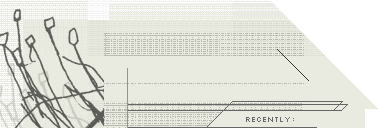London-based musician John Burton mines folk music as a point of departure for
his second full-length effort, the follow-up to the much lauded Housebound Spirit. The Forest and the Sea needs to be read as a whole, a fable informed by folk music's death-haunted laments and tales of metamorphosis. From these basic elements, however, Burton breeds supple, exploratory electroacoustic collages, spotted by swooping melodies and austere harmonic
drifts.
Not as intensive as its predecessor in its use of electronic manipulation, The Forest and the Sea takes this element no less seriously, displaying a complex virtuosity, connecting quivering note-bends, gusts of distortion, and high-pitched computer beats and giving them an integral part in the album's overall sense of transformation. Accordingly, this record is not a work of binaries, nor of singularity. Instead, it seems simply about Otherness, about a strange duality bordering on the paradoxical. Dark harmonies constantly unravel like a dizzying, vibrating force, augmented and reflected by digital splutters and percussive squeals and thuds.
Tracks are complex, but each layer is distinct. Swelling pipe organs, waspish synths, and chasmal sub-bass drones are coordinated like so many orchestra sections. A controlled intensity is evident, capable of assuming a number of forms (traditional or otherwise). Every instrument, every particle, every empty space in these songs seems to bristle with life, with spirit. In "Maria in the Forest," trumpets rise up into monstrous figures, then swiftly recede back into tiny fragments and atmospheric effects. At other times there is an equal distribution of timbres, but then elements start dropping out of the mix, reentering slightly tweaked so as to change the point of focus.
Burton's mournful warble is another important aspect of this sound. Sometimes it takes shelter under the earth-tones of sustained, moaning strings; other times it stands high atop a bed of gently strummed guitar, adding a certain fairytale feel; still other times it makes only brief appearances, providing structure or nudging a segment further along.
Even in the more minimal pieces, the more modulated electronics are no less powerful. "Dream II," for example, is replete with wiry, ringing guitar strings shaded by unbroken bowed drones, and panned glitches and flickers that push the piece into odd meters.
Burton displays an astounding breadth and versatility, and this entire album comes to read like a medieval tale — one where spirits live in the rocks, in the animals, and in the birdsongs that float through the trees.
|

